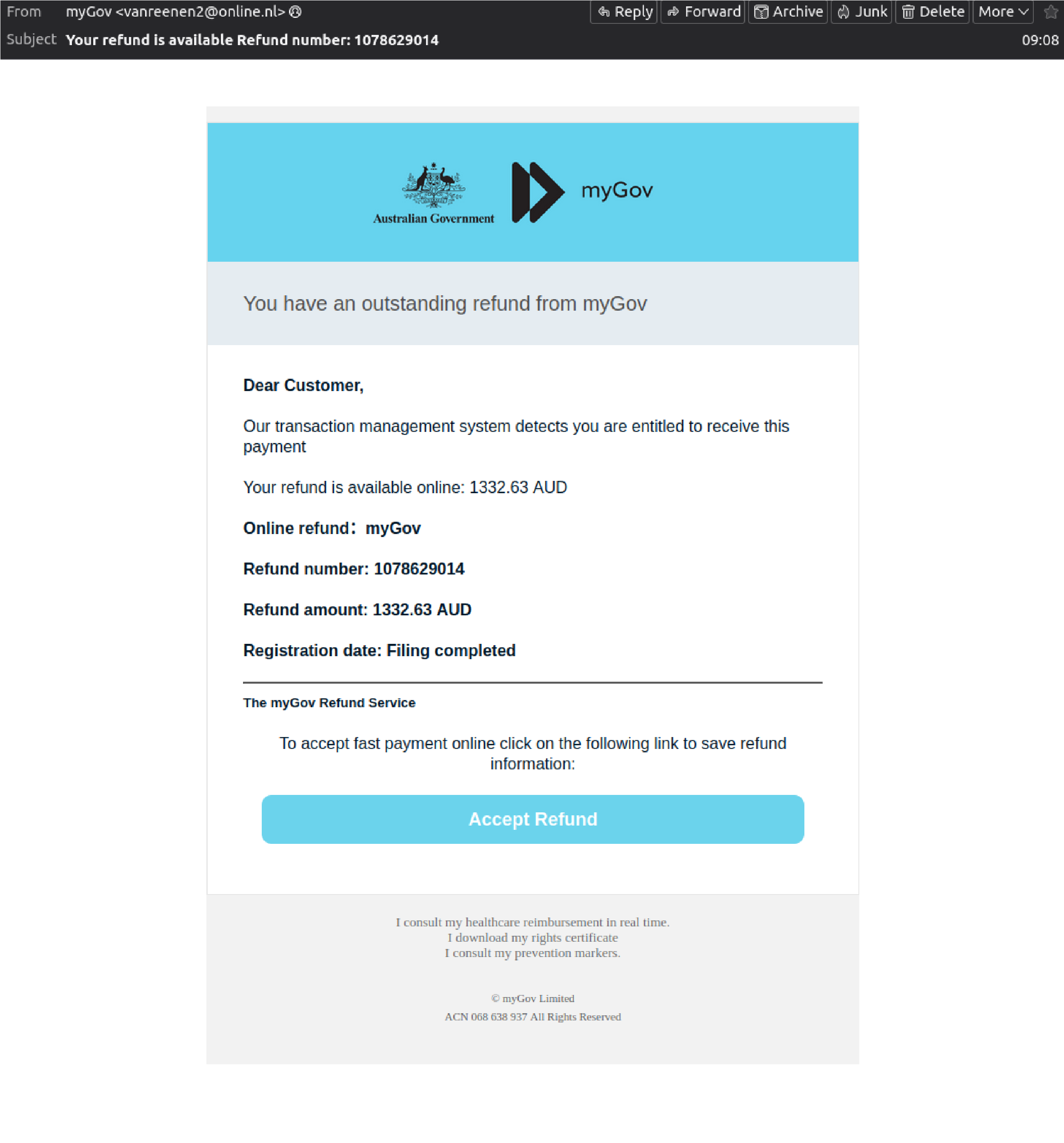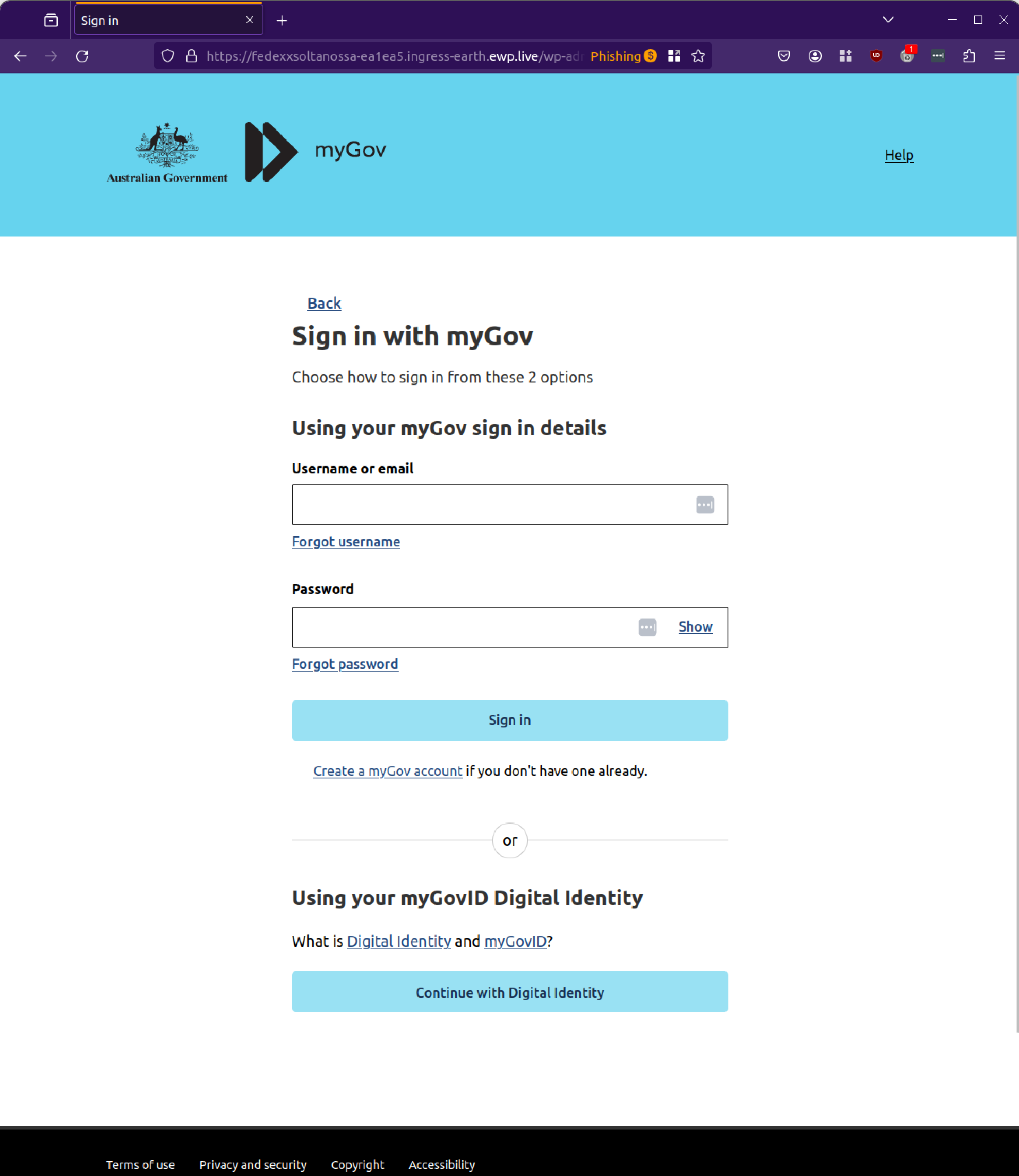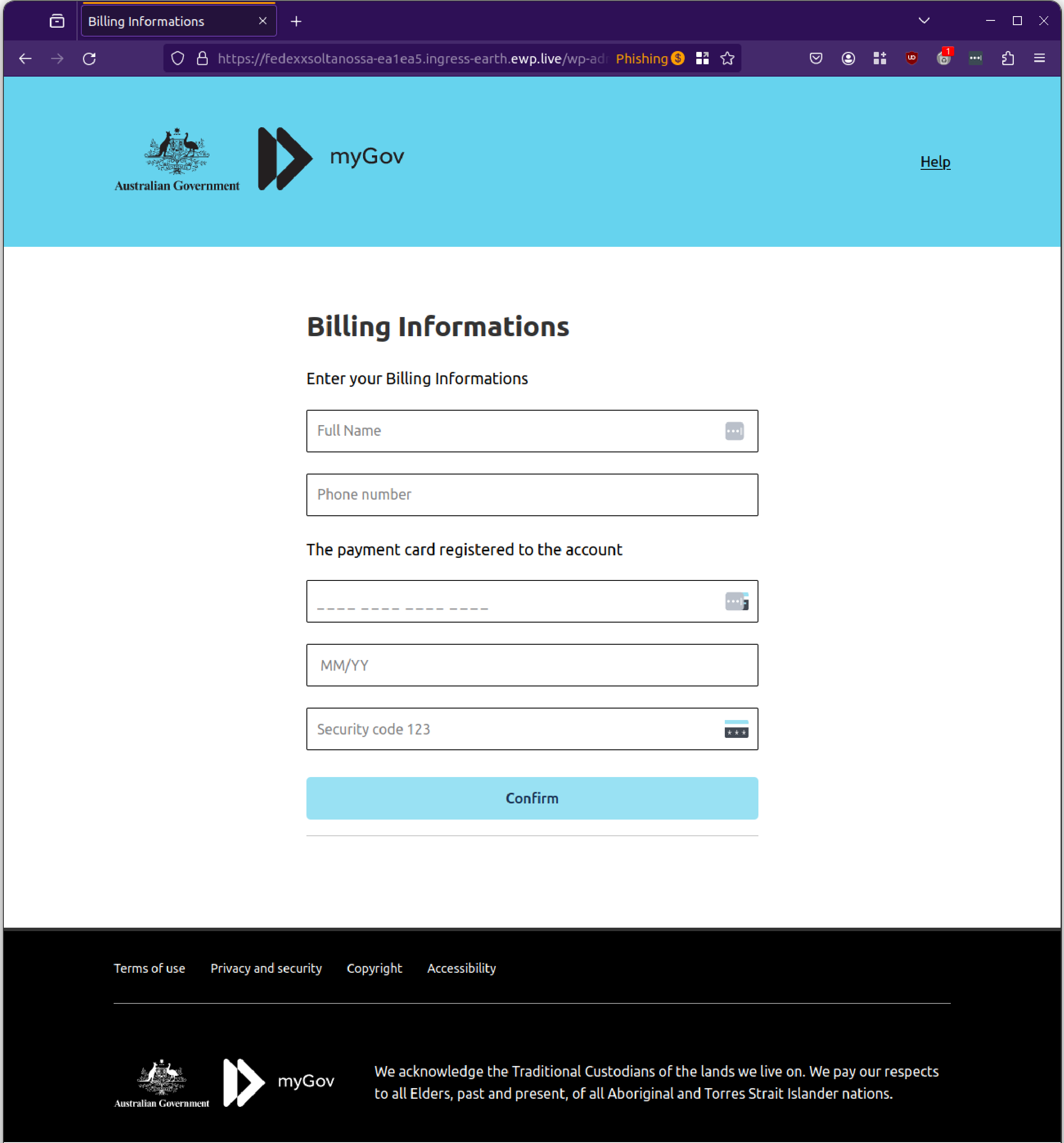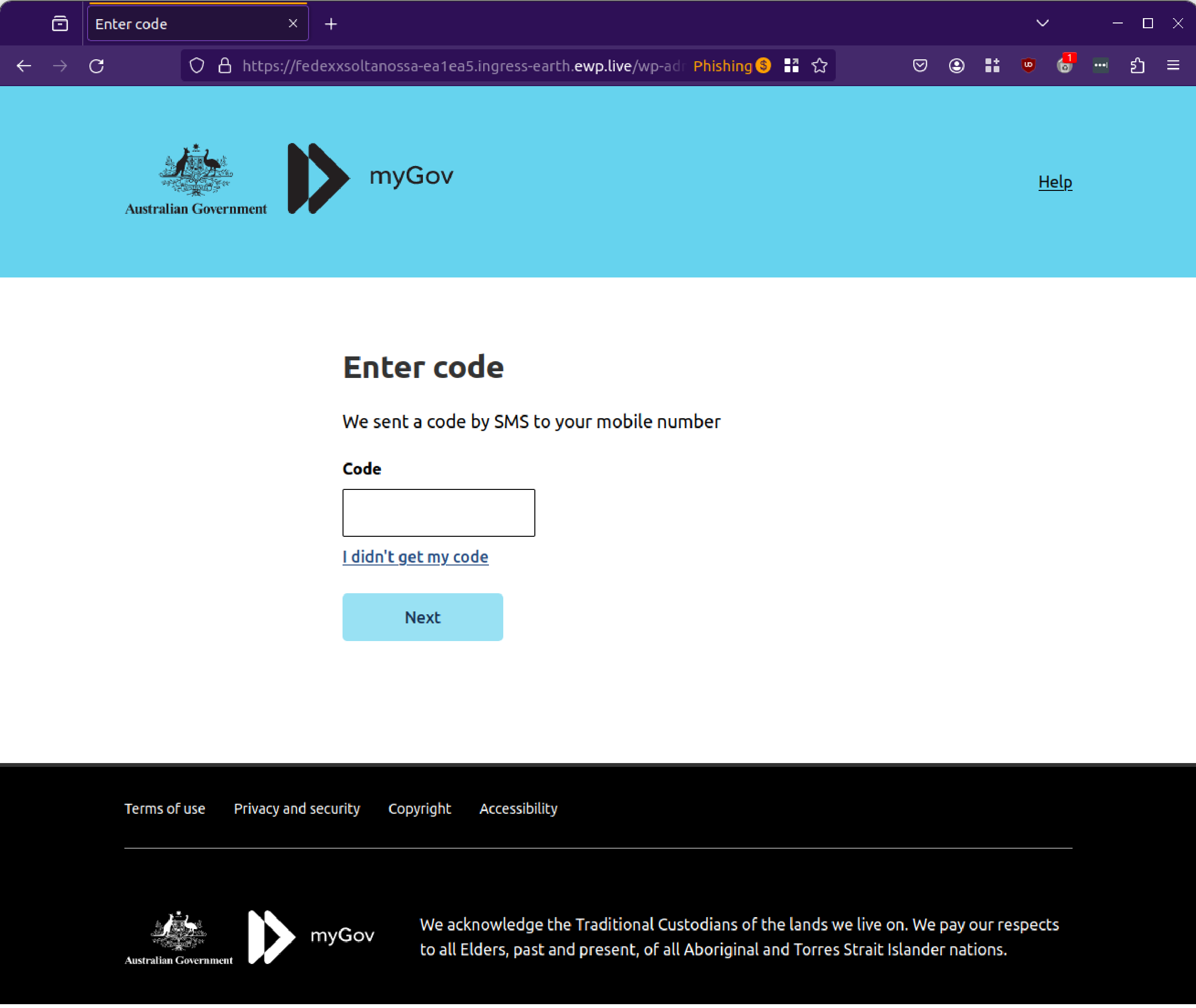According to the Australian government website, ‘myGov is a simple and secure way to access government services online in one place.’ So, it stands to reason that it’s also a hot target for scammers who are trying to steal credentials.
With a population over 26 million, and 3.3 million app users with daily use exceeding 782,000 times per day, it explains why myGov email scams are so prolific, and why phishing kits for scammers trying to capture the credentials of innocent Australian citizens are so widely consumed.
With a myGov account, the website says you can access services from the Australian Taxation Office (ATO), Centrelink, Child Support, the Department of Health Applications Portal, the Department of Veterans' Affairs, HousingVic Online Services, the Individual Healthcare Identifiers service, Medicare, My Aged Care, My Health Record, the National Cancer Screening Register, the National Disability Insurance Scheme, the National Redress Scheme, State Revenue Office Victoria, Unique Student Identifier (USI), and Workforce Australia. And, with access to all those services all manner of scams become feasible, particularly identity fraud.
Our team are continually intercepting variations on these scams that originate from different parties, but with a common theme. Here are some examples from last year, in January 2023 and October 2023, and they go even further back, like this one from April 2017. And so, the trend continues with our team intercepting a new variant this week, with the details below and carrying the new, updated myGov branding.
The subject line of the email reads ‘Your refund is available Refund number: 1078629014’, and the sender name is myGov, however the actually sender email is ‘vanreenen2(at)online(dot)nl’ which is most certainly a compromised account. In a cruel twist, the email promises victims, many of which may be dependent on their myGov credentials for financial assistance, a healthy refund of AUD $1,332.63.
You can see an example of the email below:

Clicking through on the blue ‘Accept Refund’ button directs victims to a well-executed myGov Sign In page, complete with the Australian Government crest for authenticity. The phishing page requests the users’ username or email and their password. Alternatively, the page also offers the option for users to Sign In ‘Using your myGov Digital Identity’.

After completion of the Sign In page, users are directed to a ‘Billing Informations’ page, with the obvious grammatical error with pluralised ‘Information’ being one of the most prominent tell-tales that this is indeed a scam. Nonetheless, for those that continue, presumably supplying their card details in anticipation of a refund, the page requests their full name, phone number, payment card number, expiry date and CCV.

The final step in the scam is an ‘Enter Code’ page, where users are requested to submit a verification code that has been sent to the phone number provided. In reality the code is likely to be authorising a payment from the card in favour of the scammers

myGov offers the following advice to all users:
“myGov is delivered by Services Australia. We will never send you an email or SMS with a hyperlink directing you to sign in to your myGov account. Always access myGov by typing in the web address yourself.
Services Australia and myGov will never send you an email or text message asking for your:
- username
- password
- myGov PIN
- secret questions and answers
- personal details.
When you are signed in to myGov, the messages in your myGov Inbox are secure. It’s safe to open links included in myGov Inbox messages.”
MailGuard advises all recipients of this email to delete it immediately without clicking on any links. Providing your personal details can result in your sensitive information being used for criminal activity and may have a severe negative impact on your business and its financial well-being.
MailGuard urges users not to click links or open attachments within emails that:
- Are not addressed to you by name.
- Appear to be from a legitimate company but use poor English or omits personal details that a legitimate sender would include.
- Are from businesses that you were not expecting to hear from, and/or
- Take you to a landing page or website that is not the legitimate URL of the company the email is purporting to be sent from.
Many businesses turn to MailGuard after an incident or a near miss, often as a result of an email similar to the one shown above. If unwanted emails are a problem for your business, don’t wait until it’s too late.
Reach out to our team for a confidential discussion by emailing expert@mailguard.com.au or calling 1300 30 44 30.
One email is all that it takes
All that it takes to devastate your business is a cleverly worded email message that can steal sensitive user credentials or disrupt your business operations. If scammers can trick one person in your company into clicking on a malicious link or attachment, they can gain access to your data or inflict damage on your business.
For a few dollars per staff member per month, you can protect your business with MailGuard's predictive and advanced email security. Talk to a solution consultant at MailGuard today about securing your company's inboxes.
Stay up-to-date with MailGuard's latest blog posts by subscribing to free updates. Subscribe to weekly updates by clicking on the button below.







